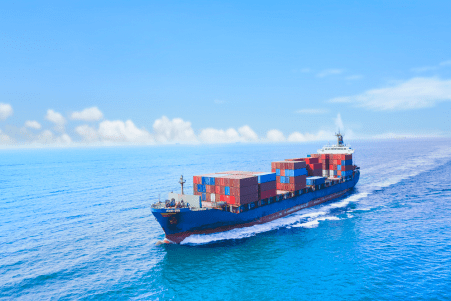Red Sea | 42 Filipino Seafarers Safe As Ships Attacked

Table of Contents
Red Sea Incident
42 Filipino seafarers as their foreign vessels encountered missile attacks while traversing the Red Sea. All have been accounted for and are in good spirits according to the Department of Migrant Workers (DMW).
Six ships travelling the Red Sea and the Gulf of Aden have been attacked since April 25. The Migrant Workers Secretary Hans Cacdac released this information during the Kapihan sa Manila Bay media forum.
Three of the six ships have Filipino seafarers on board as crew.
Discover the untold stories of resilience and the impact of international cooperation on maritime safety in the Red Sea.
Introduction
The recent rescue of 42 Filipino seafarers in the Red Sea following ship attacks has highlighted both the dangers faced by maritime workers and the heroic efforts of rescue operations. This incident underscores the importance of maritime safety and the challenges encountered by seafarers in high-risk areas.
Background of the Incident
In the Red Sea, two ships carrying Filipino crew members were attacked, leading to a distress call and urgent response by authorities. The attacks, likely perpetrated by pirates or hostile entities, put the lives of the crew members at risk and necessitated swift action for their rescue.
Rescue Operation Details
The rescue operation involved coordinated efforts by local and international maritime authorities to ensure the safety and evacuation of the affected seafarers. Helicopters, naval vessels, and other assets were deployed to secure the area and facilitate the evacuation process amid heightened security concerns.
Challenges Faced
The rescue operation faced significant challenges due to the volatile security situation in the Red Sea region. Hostile activities and maritime threats posed obstacles to the safe extraction of the seafarers, requiring meticulous planning and execution by rescue teams.
Importance of Maritime Safety
This incident underscores the critical importance of prioritizing maritime safety and security measures. Seafarers play a vital role in global trade and transportation, and ensuring their safety at sea is imperative for the stability of maritime operations.
Impacts on Filipino Seafarers
The ordeal faced by the 42 rescued Filipino seafarers highlights the risks encountered by maritime workers worldwide. Their resilience and fortitude in the face of danger serve as a testament to the bravery and dedication of seafarers in the shipping industry.
Reflection on Rescue Efforts
The successful rescue of the 42 Filipino seafarers is a testament to the effectiveness of coordinated rescue operations and the commitment of maritime authorities to protect seafarers in distress. The collaboration between national and international agencies exemplifies the importance of solidarity in maritime security efforts.
Rescue of Filipino Seafarers
The Red Sea incident involving the rescue of 42 Filipino seafarers from ships under attack highlights the dangerous realities faced by maritime workers in critical transit routes. Here’s a closer look at the incident:
Attack and Distress Call
In the Red Sea, two commercial vessels carrying Filipino crew members came under attack, likely by pirate groups or hostile forces. The crew members onboard faced imminent danger, prompting a distress call for urgent assistance.
Response and Rescue Operation
The distress call triggered a rapid and coordinated response from local and international maritime authorities. Helicopters, naval vessels, and security forces were mobilized to secure the area and initiate the evacuation of the seafarers from the compromised vessels.
Security Challenges
The rescue operation was complicated by the volatile security situation in the Red Sea region, known for piracy and maritime threats. Security forces had to navigate through potential risks to ensure the safety of the seafarers during the extraction process.
Importance of Maritime Safety
The incident underscores the paramount importance of maritime safety and security for seafarers operating in high-risk areas. Ensuring the safety of crew members is essential not only for their well-being but also for maintaining the integrity of global maritime trade routes.
Impact on Filipino Seafarers
The 42 Filipino seafarers caught in this perilous situation exemplify the courage and resilience of maritime workers. Their harrowing experience highlights the risks inherent in seafaring and the challenges faced by those working in critical maritime zones.
Collaboration and Success
The successful rescue operation reflects the effectiveness of coordinated efforts among national and international maritime agencies. Collaboration and swift action were instrumental in ensuring the safe evacuation and protection of the Filipino seafarers.
Continued Vigilance
While the immediate rescue was successful, ongoing vigilance and proactive security measures remain essential in safeguarding seafarers operating in high-threat environments like the Red Sea. Continuous efforts are needed to mitigate risks and protect maritime workers worldwide.
This elaboration provides a detailed overview of the Red Sea incident involving the rescue of Filipino seafarers, emphasizing the challenges faced and the importance of maritime safety and security measures. If you have further questions or require more information, please feel free to ask.
What to do?
If you find yourself in a situation similar to the Red Sea incident or any emergency at sea, here are important steps to take:
1. Stay Calm
Maintain composure and avoid panic. Clear thinking is crucial during emergencies.
2. Alert Authorities
Immediately notify maritime authorities, coast guard, or relevant emergency services about the situation.
3. Issue Distress Call
Use radio or communication devices to issue a distress call, providing your vessel’s location and nature of the emergency.
4. Follow Emergency Procedures
Implement onboard emergency protocols and procedures as per maritime regulations and vessel-specific guidelines.
5. Ensure Safety of Crew
Prioritize the safety and well-being of all crew members. Prepare for potential evacuation or rescue operations.
6. Cooperate with Rescuers
Follow instructions from responding authorities or rescue teams. Provide accurate information to facilitate the rescue process.
7. Utilize Safety Equipment
Use life jackets, lifeboats, and other safety equipment as necessary. Ensure all crew members are accounted for.
8. Document the Incident
Record details of the incident, including time, location, events, and any injuries or damages.
9. Communicate with Family or Authorities
Keep lines of communication open with family members, employers, or relevant authorities to provide updates and receive support.
10. Seek Medical Attention
Attend to any injuries or medical concerns promptly. Seek medical assistance once safe to do so.
11. Report the Incident
Report the incident to appropriate maritime agencies or regulatory bodies for investigation and follow-up.
12. Review and Learn
After the incident, conduct a thorough review to identify lessons learned and implement improvements to enhance onboard safety and preparedness.
These steps are general guidelines for handling emergencies at sea, including situations like the Red Sea incident. Always prioritize safety and follow professional advice and protocols in maritime emergencies. If you are currently facing an emergency, please seek immediate assistance from authorities or emergency services.
Global Impact
The global impact of incidents like the rescue of Filipino seafarers in the Red Sea extends beyond the immediate circumstances and highlights broader issues affecting maritime operations and international relations:
Maritime Security Concerns
Heightened Awareness: Incidents in critical maritime zones raise awareness about ongoing security threats, including piracy, terrorism, and geopolitical tensions affecting shipping lanes.
Collaborative Efforts: International cooperation is essential to combat maritime security challenges and protect seafarers navigating high-risk areas.
Economic Implications
Disruption to Trade: Attacks on commercial vessels disrupt global trade routes, potentially affecting supply chains and international commerce.
Insurance and Risk Management: Maritime incidents impact insurance rates and risk assessments for shipping companies and insurers, influencing operational costs.
Humanitarian Considerations
Seafarers’ Safety: The safety and welfare of seafarers are paramount, emphasizing the need for improved safety protocols, training, and support services.
Crew Resilience: Rescued seafarers exemplify the resilience and courage of maritime workers facing adversity at sea.
Policy and Diplomatic Responses
Governmental Action: Incidents prompt governments to review maritime security policies, deploy naval assets, and engage in diplomatic efforts to enhance regional stability.
Multilateral Cooperation: International organizations, such as the United Nations and International Maritime Organization (IMO), facilitate dialogue and cooperation on maritime security issues.
Public Awareness and Advocacy
Public Discourse: Media coverage of maritime incidents raises public awareness about seafarers’ challenges and the importance of maritime safety.
Advocacy for Seafarers’ Rights: NGOs and advocacy groups promote seafarers’ rights and welfare, advocating for improved working conditions and protection at sea.
Long-Term Impact
Policy Reforms: Incidents prompt long-term reforms in maritime regulations, security frameworks, and industry practices to enhance safety and mitigate risks.
Industry Adaptation: Shipping companies and stakeholders adapt to evolving security landscapes, integrating technology and best practices to safeguard maritime operations.
The global impact of maritime incidents underscores the interconnectedness of maritime activities and the need for comprehensive approaches to ensure safety, security, and resilience in international waters.
These considerations highlight the broader implications of maritime incidents on a global scale, emphasizing the importance of collective action and strategic responses to enhance maritime security and protect seafarers worldwide. If you have specific questions or require further insights, feel free to reach out for more information.
Conclusion
In conclusion, the recent rescue of 42 Filipino seafarers in the Red Sea serves as a poignant reminder of the challenges and risks faced by maritime workers operating in high-risk areas. This incident underscores the critical importance of maritime safety and international cooperation in ensuring the security and well-being of seafarers worldwide.
The successful rescue operation, facilitated by coordinated efforts of maritime authorities and security forces, demonstrates the effectiveness of proactive measures in responding to maritime emergencies. It also highlights the resilience and bravery of seafarers who navigate perilous waters to facilitate global trade and transportation.
Moving forward, it is imperative for governments, international organizations, and industry stakeholders to continue strengthening maritime security frameworks, implementing robust safety protocols, and advocating for seafarers’ rights and welfare. By fostering collaboration and prioritizing safety at sea, we can mitigate risks, enhance maritime resilience, and safeguard the livelihoods of seafarers across the globe.
As we reflect on the Red Sea incident and its broader implications, let us reaffirm our commitment to supporting seafarers, upholding maritime safety standards, and promoting sustainable practices in the maritime industry.
The rescue of 42 Filipino seafarers from the Red Sea following ship attacks underscores the complex challenges faced by maritime workers and the critical role of maritime safety initiatives. This incident serves as a reminder of the bravery and resilience of seafarers and the ongoing efforts to enhance security measures in high-risk maritime areas.
This comprehensive review reflects on the recent Red Sea incident involving Filipino seafarers, emphasizing the significance of maritime safety and the commendable rescue efforts undertaken. If you have further inquiries or require additional information, please feel free to reach out.
ADVERTISEMENT

Jom Bourie a professional poker player and an author of books about poker. Boasts an impressive 37-year tenure in the gambling industry, with a passion for gaming that has earned him a reputation as a trusted and knowledgeable figure. His dedication to precision, integrity, and transparency has enabled him to provide players with unparalleled insights and recommendations for exceptional online gaming experiences.
His videos have been viewed more than 22 million times on YouTube and his casino travel articles have appeared in magazines. He has also written numerous articles for gaming magazines circulation gaming magazines.